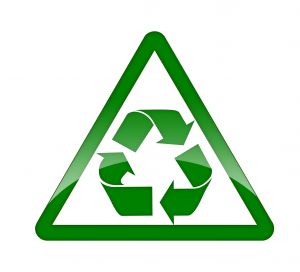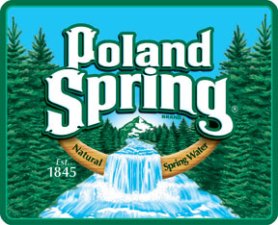Now we know many ways to go green. Most of us have incorporated some of these steps into our personal lives, either by personal choice or by government mandates. For this movement to be successful and widely embraced, it is important that each of us feel a sense of empowerment from a decision to go green. In order to sustain a green movement, there must be an immediate payoff. We realize that in some areas, particularly those of climate change and clean energy, change will be slow, cumbersome, expensive and embroiled in politics. However, there are some simpler areas of green causes to endorse that bring a more immediate sense of payoff. These include health and wellness, frugal living, minimalism, spiritual environmentalism, and self-sufficiency.
1. Health and wellness. Perhaps this is the subject area that is of utmost importance to most people today. Scientific evidence has associated several diseases and adverse health conditions to environmental pollution and use of harmful products. Many cancers are linked to the use of chemicals in cleaning products and fertilizers used to grow food. Cancer incidence rose significantly from 1950-1998. Presently it is estimated that 1 in 2 American men and 1 in 3 American women will develop cancer in their lives. Secondly, with the increased rate of air pollution, the diagnoses of asthma in adults increased 75% between 1980 and 1994 while the same diagnoses in children increased 150%. Thirdly, the incidences of autism have shown an alarming increase of 56% since 2002. Other statistics note higher rates of reported infertility problems, along with more reports of birth defects in newborns. Tests of breast milk samples consistently have shown the presence of pesticides, herbicides and household and industrial cleaners. Obviously our transition from a natural to an inorganic style of living has caused our cells to mutate, breaking them down and polluting our bodies with toxins. Adopting green standards in the selection of food and cleaning products goes a long way to protect our bodies.
2. Frugal living. At first glance, a walk through the grocery store gives the impression that organic foods and products are more expensive than non-organic products. However, upon close inspection, this is not necessarily the case. Local farmers and farmers’ markets are a great source to purchase fresh foods and vegetables. Local merchants often are available to answer any questions regarding fertilizing and growing techniques of their crops, as well as freshness of the products available for purchase. When eating out, the new trend of local farm-to-table restaurants offer an opportunity to get well-prepared food that supports local farmers and merchants. Frugal living also involves (1) purchasing reusable containers and cleaning materials as opposed to disposable paper and plastics; (2) walking, biking, carpooling or taking public transportation to get around town; and (3) even choosing to live in planned urban developments with parks, restaurants, shopping and entertainment facilities and schools strategically located in close proximity to residences and/or the provision of clean-energy public transportation to travel around our communities. Frugal living enables us to save money, time and the environment while going green.
3. Minimalism. A major complaint often voiced today by many people is that life is so complex. We often are so over-committed to work, social activities and chasing the American dream that we have cluttered our homes and minds to an unhealthy degree. A minimalist lifestyle urges us to slow down, eliminate distractions, reconnect with family, friends and the universe and to feel less stressed, rushed and exhausted. By necessity, minimalism incorporates frugal living. We avoid wasteful consumerism, using only what we need, thereby being able to downsize our living spaces, possessions and activities. This truly is a green concept with an immediate payoff.
4. Spiritual environmentalism. Perhaps the first known environmentalist was Henry David Thoreau. His recognition and embracement of the environment was from a spiritual perspective. Thoreau recognized that “in wilderness is the presentation of the world”. Thoreau was an extremist regarding man’s need to coexist with the planet. A study of his writings reveals his understanding of the need to wisely manage all resources, including, but not limited to time, money, work, talents and health. For living space, Thoreau states: “[e]ach town should have a park, or rather a primitive forest, of five hundred or a thousand acres, where a stick should never be cut for fuel, a common possession forever, for instruction and recreation”. Thoreau Journal, October 15, 1859
Finally, on the need to protect the environment Thoreau writes: “[w]hat is the use of a house if you haven’t got a tolerable planet to put it on?” Familiar Letter, Thoreau to Harrison Blake
And finally, “[a]t the same time that we are earnest to explore and learn all things, we require that all things be mysterious and unexplainable, that land and sea be infinitely wild, unsurveyed and unfathomed by us because unfathomable. We can never have enough Nature.” Thoreau, Walden, Spring
Spiritual environmentalism is a very personal journey for many people, and provides a response to the recognition that the Earth does not belong to us, but rather is on loan. We are the stewards of the Earth and are responsible to preserve it and pass it along to future generations. Another great reason to go green.
5. Self-sufficiency. The foundation of green living is self-sufficiency. We cannot expect private businesses to promote individual self-sufficiency as this is contraindicated to their main goal, to increase the bottom line. Also, we cannot afford to wait to break through government gridlock to enact laws mandating use of renewable energy, sustainable care of land, and protection of natural resources or to enforce the ban of harmful chemicals in foods and other products of daily living. Self-sufficiency affords us the opportunity to prepare for natural disasters and potential catastrophes through education; become savvy in recognizing political corruption and using our vote to repudiate it; maintain awareness of flaws in the present social structure which heavily relies on over-consumption and waste and to take pride in adopting a satisfying lifestyle that promotes a healthy balance of work and family life.
These are just a few reasons to go green. The list goes on and on. There is so much that we can do to reduce our carbon footprint and protect our environment. Let’s live green and be green.
An excellent source for environmental articles and statistics can be found at http://www.sustainablebabysteps.com/environmental-articles.html.






